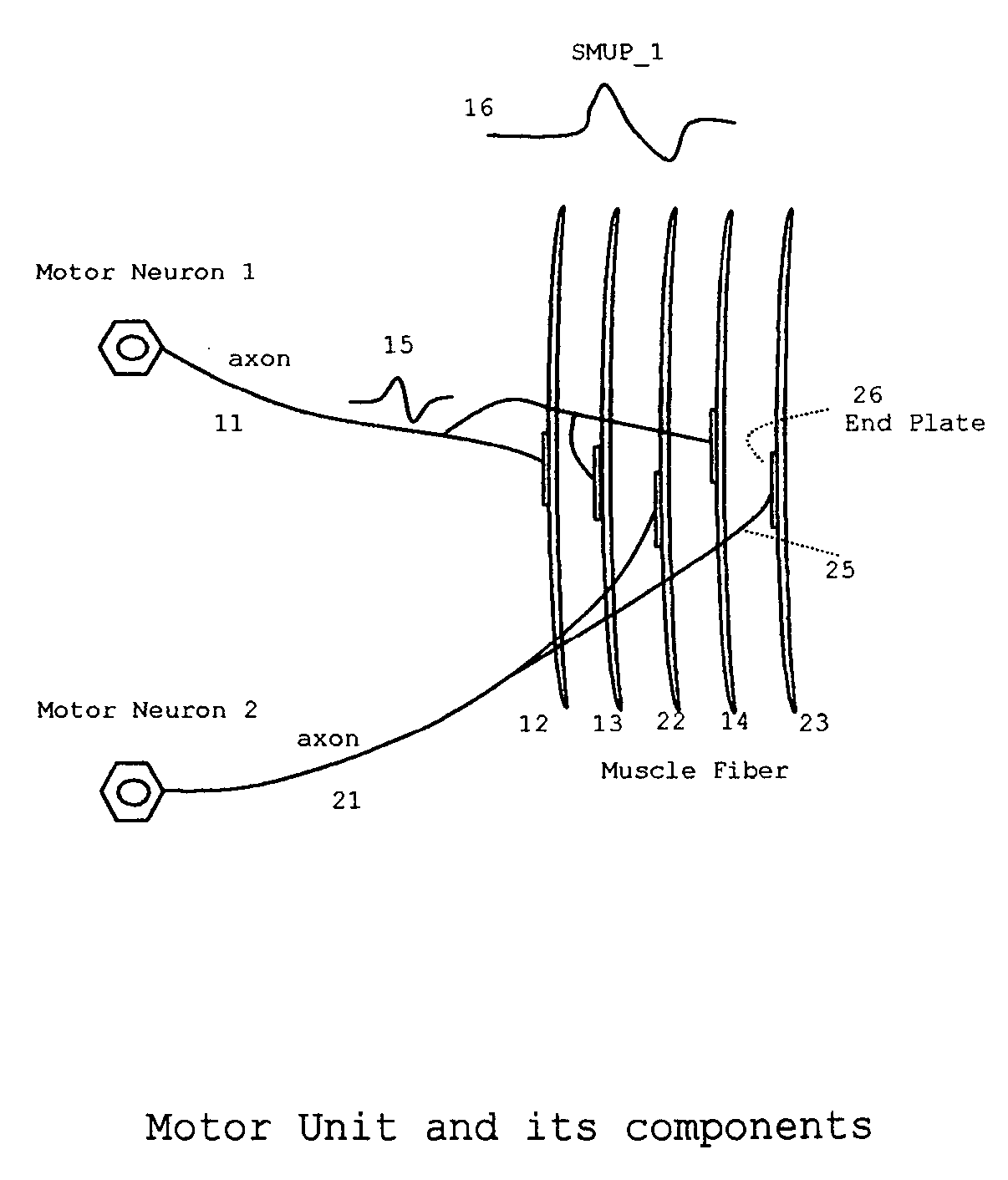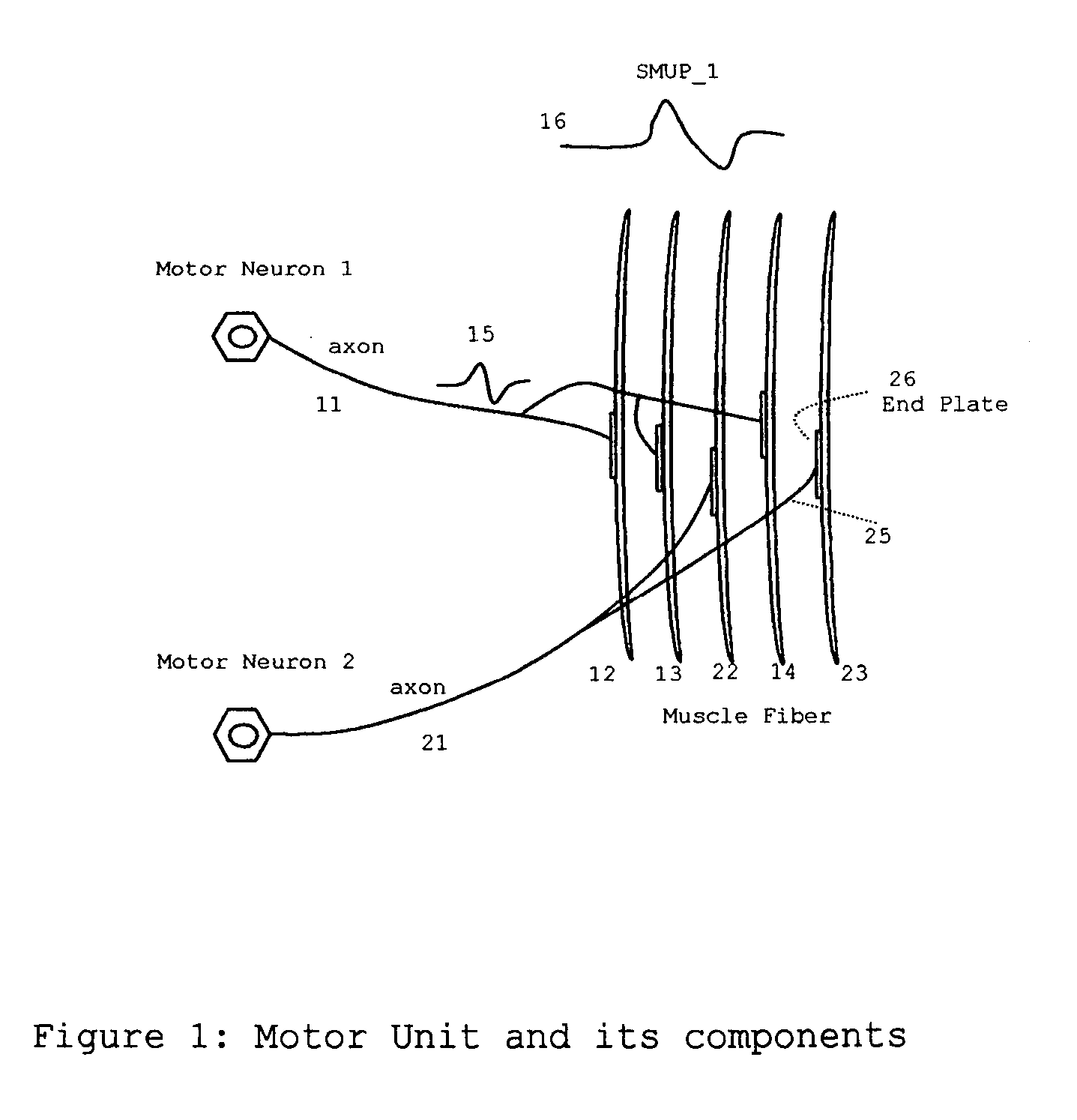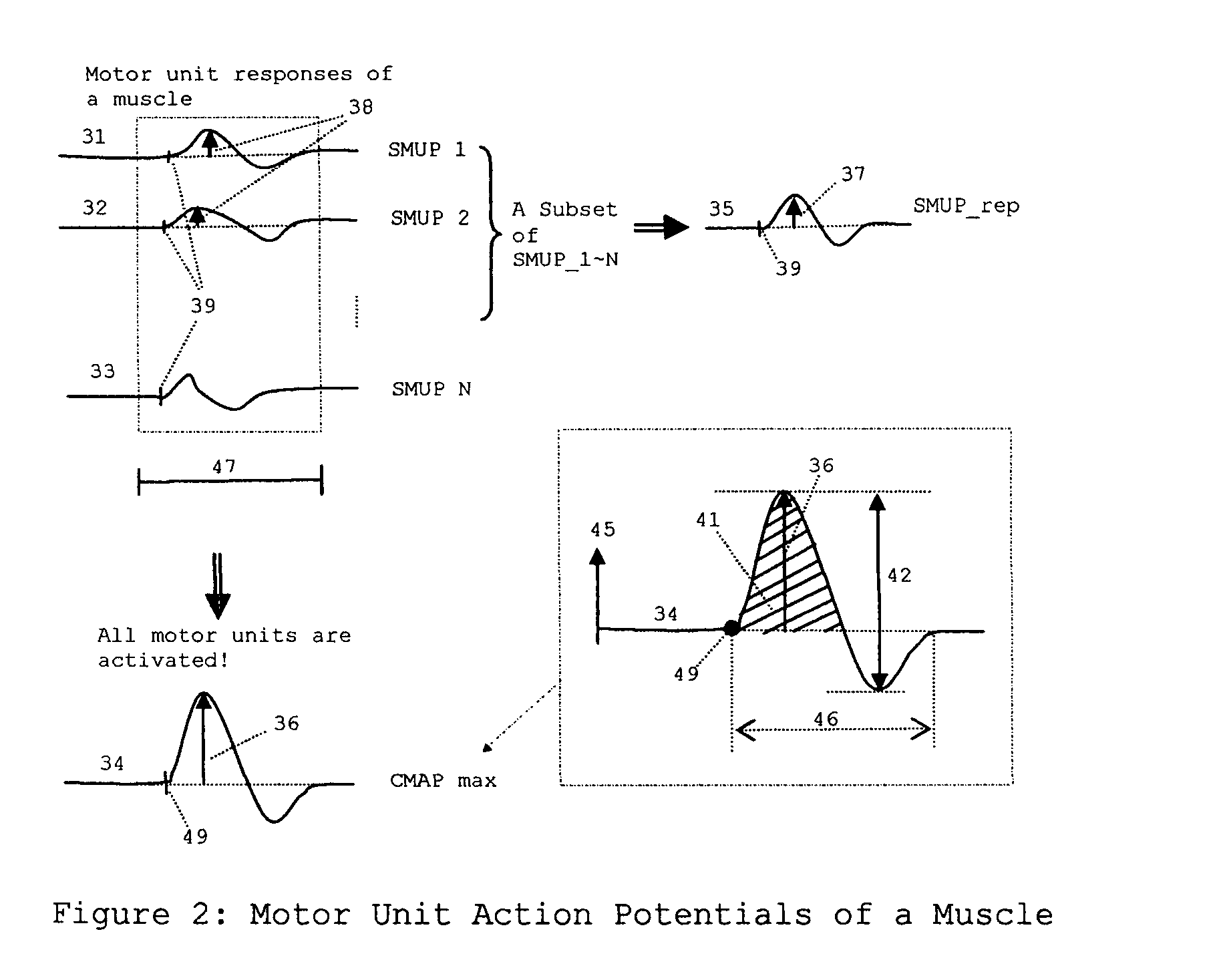Motor unit number estimation (MUNE) for the assessment of neuromuscular function
a motor unit and neuromuscular technology, applied in the field of motor unit number estimation for neuromuscular function assessment, can solve the problems of alternation, reduced mun, and reduced muscle group strength, and achieve the effect of reducing the number of stimulation, and avoiding the loss of muscle group strength
- Summary
- Abstract
- Description
- Claims
- Application Information
AI Technical Summary
Benefits of technology
Problems solved by technology
Method used
Image
Examples
Embodiment Construction
[0068] MUNE is a technology developed to evaluate neuromuscular functions. As noted above, MUNE automation using the traditional IS method needs to address the issue of motor unit alternation. The present invention provides an automation method to estimate MUN more accurately and reliably by minimizing the adverse effect of alternation based on waveforms acquired with pre-configured electrode array under controlled stimulation conditions. The methodology of the preferred embodiment of the invention is illustrated in FIG. 5.
[0069] 1. Pre-configured Electrode Array. A surface electrode array 50 (FIG. 4) consists of pre-arranged electrodes on a single housing. The array is placed on the surface of skin of the subject according to anatomical landmarks (e.g., distal wrist crest 53 in FIG. 4). The electrodes are used to deliver stimuli and to acquire response waveforms. The stimulator portion of the electrode comprises two or more electrodes 64, 65, and 66 (FIG. 4). The stimulator electr...
PUM
 Login to View More
Login to View More Abstract
Description
Claims
Application Information
 Login to View More
Login to View More - R&D
- Intellectual Property
- Life Sciences
- Materials
- Tech Scout
- Unparalleled Data Quality
- Higher Quality Content
- 60% Fewer Hallucinations
Browse by: Latest US Patents, China's latest patents, Technical Efficacy Thesaurus, Application Domain, Technology Topic, Popular Technical Reports.
© 2025 PatSnap. All rights reserved.Legal|Privacy policy|Modern Slavery Act Transparency Statement|Sitemap|About US| Contact US: help@patsnap.com



